Abstract
A serologic survey was made in 15 health unit areas, testing some 5000 individuals in the age groups 4 to 6, 11 to 13, 15 to 17 and 23 to 45 years. Two types of serious deficiency were found. Only 65% of children 4 to 6 years old had antibodies to all three types of poliovirus, the antibodies being due almost entirely to immunization with Salk vaccine. Even in children who had had six or more doses only 74% had antibodies to the three types. The high percentage of students 11 to 13 and 15 to 17 years old with poliovirus antibodies can be attributed largely to natural infection and to Sabin vaccine in the mass campaign of 1962, as well as to Salk vaccine. In children who had received Sabin vaccine as well as Salk vaccine a very high level of immunity was found. The immunity of the school-age population will decline to an insufficient level unless Sabin vaccine is used after immunization with Salk vaccine. Of children 4 to 6 years old 18% had no diphtheria antitoxin and 6% had no tetanus antitoxin. Even in those who had had six or more doses of the antigens 5% had no diphtheria antitoxin and 1 to 2% had no tetanus antitoxin. This apparently refractory state is probably due to the use of unadsorbed toxoids, and it is clear that adsorbed toxoids should be used. In the adults, diphtheria antitoxin was found in only 55% and tetanus antitoxin in only 38%.
Full text
PDF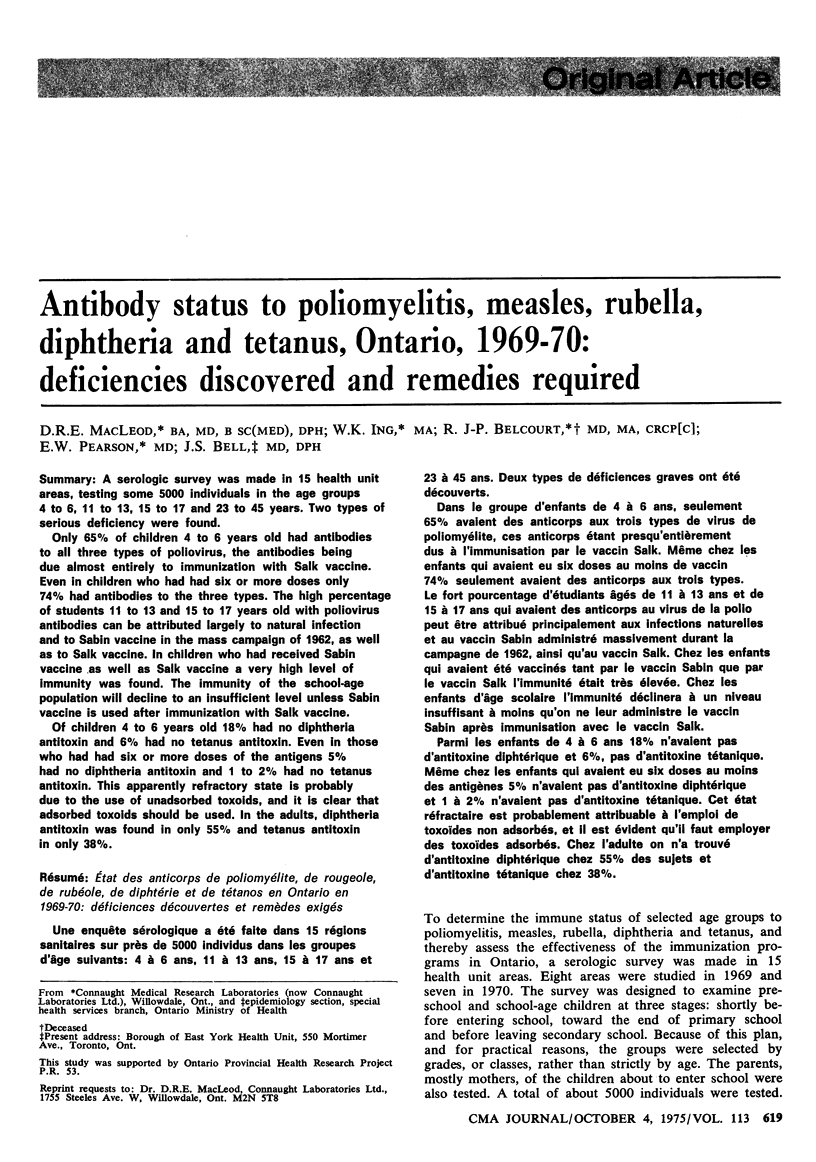
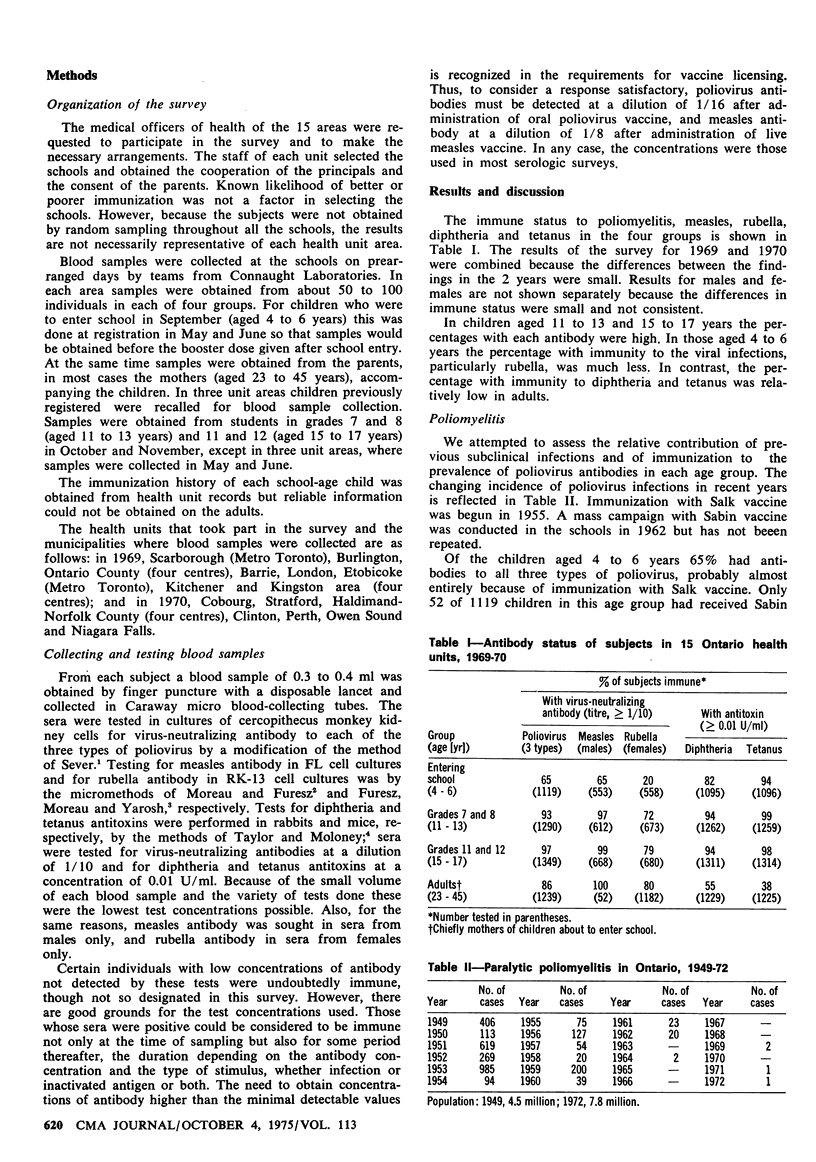
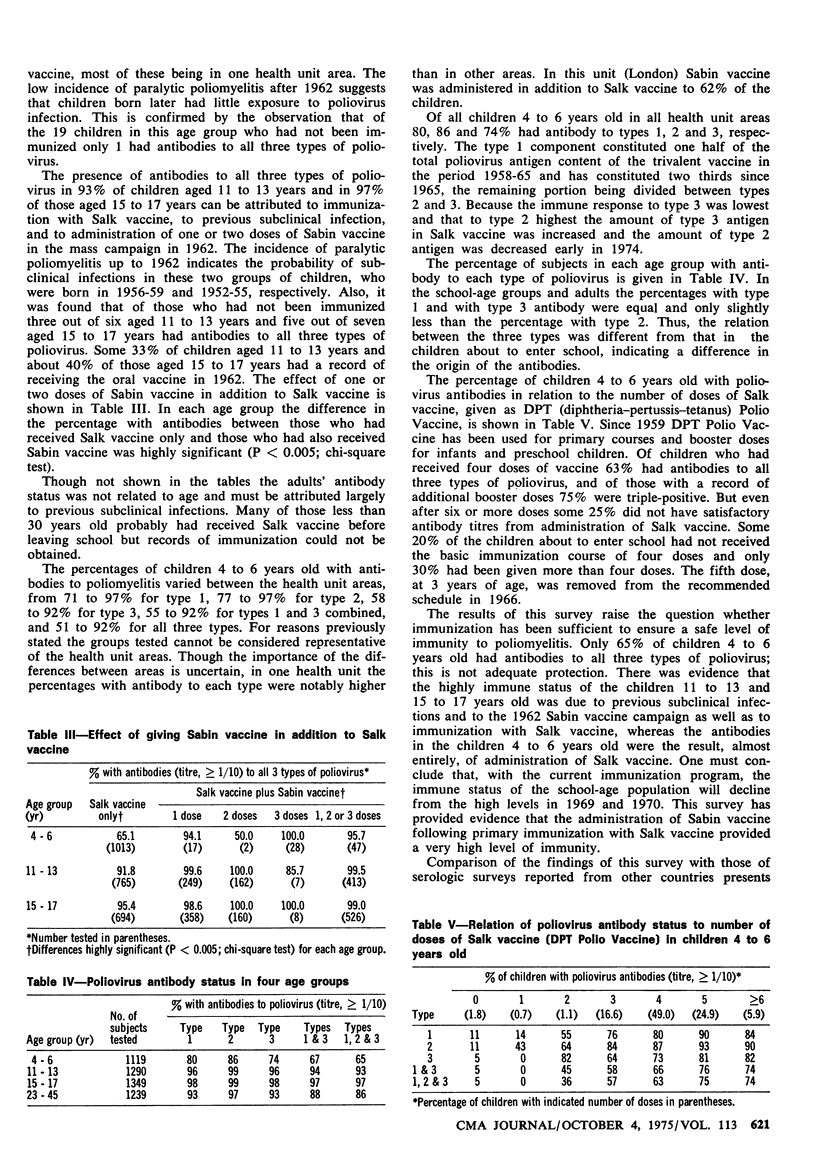
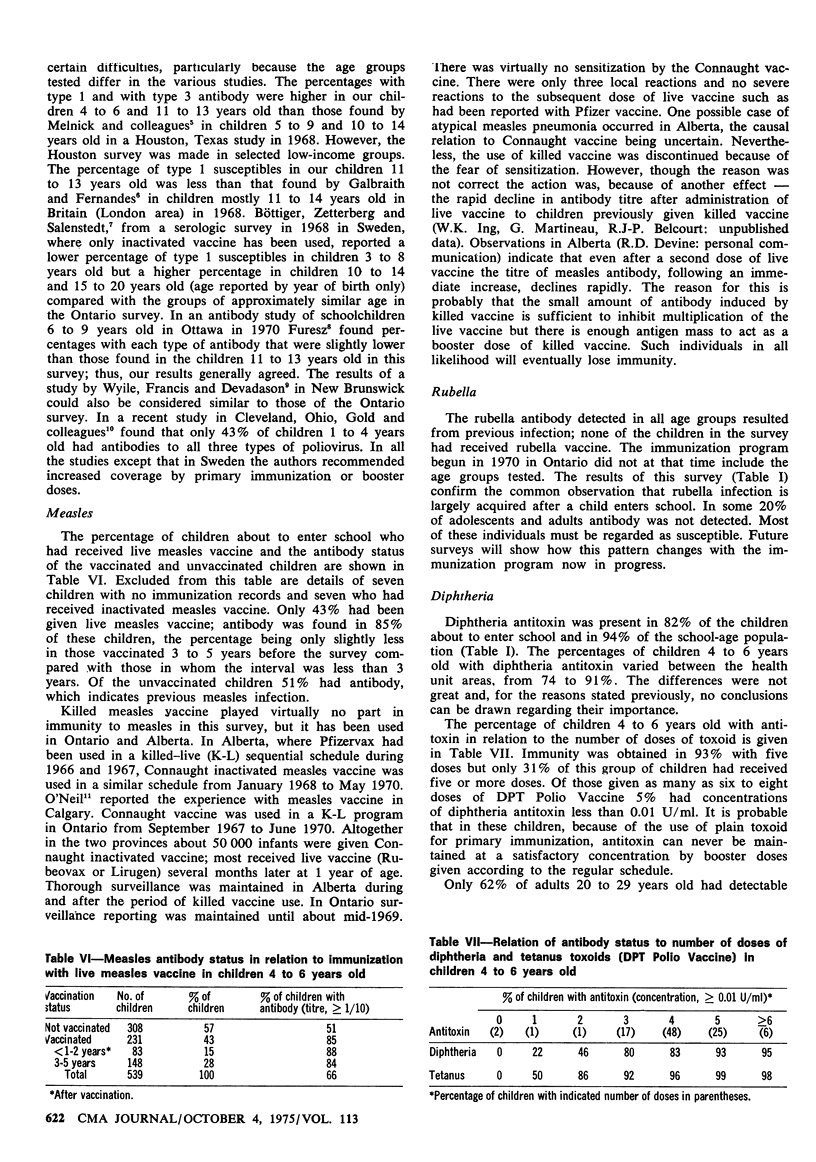
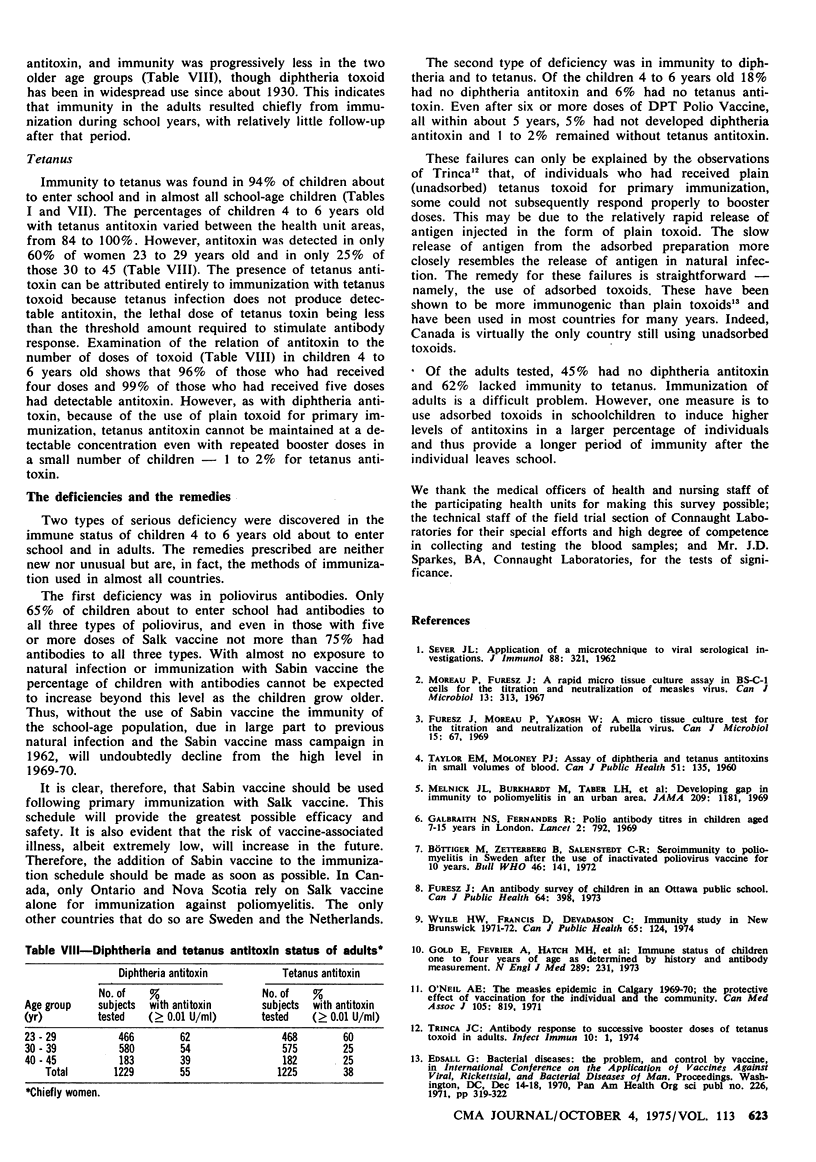
Selected References
These references are in PubMed. This may not be the complete list of references from this article.
- Böttiger M., Zetterberg B., Salenstedt C. R. Seroimmunity to poliomyelitis in Sweden after the use of inactivated poliovirus vaccine for 10 years. Bull World Health Organ. 1972;46(2):141–149. [PMC free article] [PubMed] [Google Scholar]
- Furesz J. An antibody survey of children in an Ottawa public school. Can J Public Health. 1973 Jul-Aug;64(4):398–402. [PubMed] [Google Scholar]
- Galbraith N. S., Fernandes R. Polioantibody titres in children aged 7-15 years in London. Lancet. 1969 Oct 11;2(7624):792–793. doi: 10.1016/s0140-6736(69)90496-6. [DOI] [PubMed] [Google Scholar]
- Gold E., Fevrier A., Hatch M. H., Herrmann K. L., Jones W. L., Krugman R. D., Parkman P. D. Immune status of children one to four years of age as determined by history and antibody measurement. N Engl J Med. 1973 Aug 2;289(5):231–235. doi: 10.1056/NEJM197308022890502. [DOI] [PubMed] [Google Scholar]
- Melnick J. L., Burkhardt M., Taber L. H., Erckman P. N. Developing gap in immunity to poliomyelitis in an urban area. JAMA. 1969 Aug 25;209(8):1181–1185. [PubMed] [Google Scholar]
- O'Neil A. E. The measles epidemic in Calgary 1969-70; the protective effect of vaccination for the individual and the community. Can Med Assoc J. 1971 Oct 23;105(8):819–825. [PMC free article] [PubMed] [Google Scholar]
- TAYLOR E. M., MOLONEY P. J. Assay of diphtheria and tetanus antitoxins in small volumes of blood. Can J Public Health. 1960 Apr;51:135–138. [PubMed] [Google Scholar]
- Trinca J. C. Antibody response to successive booster doses of tetanus toxoid in adults. Infect Immun. 1974 Jul;10(1):1–5. doi: 10.1128/iai.10.1.1-5.1974. [DOI] [PMC free article] [PubMed] [Google Scholar]
- Wyile H. W., Francìs D., Devadason C. Immunity study in New Brunswick 1971-72. Can J Public Health. 1974 Mar-Apr;65(2):124–126. [PubMed] [Google Scholar]


